TRY THESE SIMPLE HOMEMADE FIRE STARTERS
In a way, fire might be considered a multitool, given how many uses we have for it out in the field. It keeps us warm on cold nights and dries us out if we get wet. It boils water to render it safe to drink and it cooks our food to make it more palatable. It lights up the night to keep the boogeyman away.

Make no mistake, there is a strong psychological component at work, too. Being able to get a fire going, especially in challenging conditions, provides a sense of control over a situation that might otherwise feel absolutely chaotic. This is important, as it gives you an edge and can help turn the tide against feelings of fear or helplessness.
There are any number of tinder products available for purchase and most of them work quite well. I’m particularly fond of Fastfire cubes from SOLKOA Survival Systems. However, there are alternatives that not only work just fine, but they’re also infinitely cheaper.
WAXED STRING
This one is particularly good for those who want to involve their children in a project. All you need is twine – jute or cotton work great – and paraffin. If you don’t already have a spool of string sitting in the kitchen or workshop, you can find it at any hardware store. For the paraffin, I usually luck out and find a box at Goodwill for a couple of bucks. In a pinch, you could use old crayons. If you go that route, though, stick with the brand name ones as they have better quality wax.
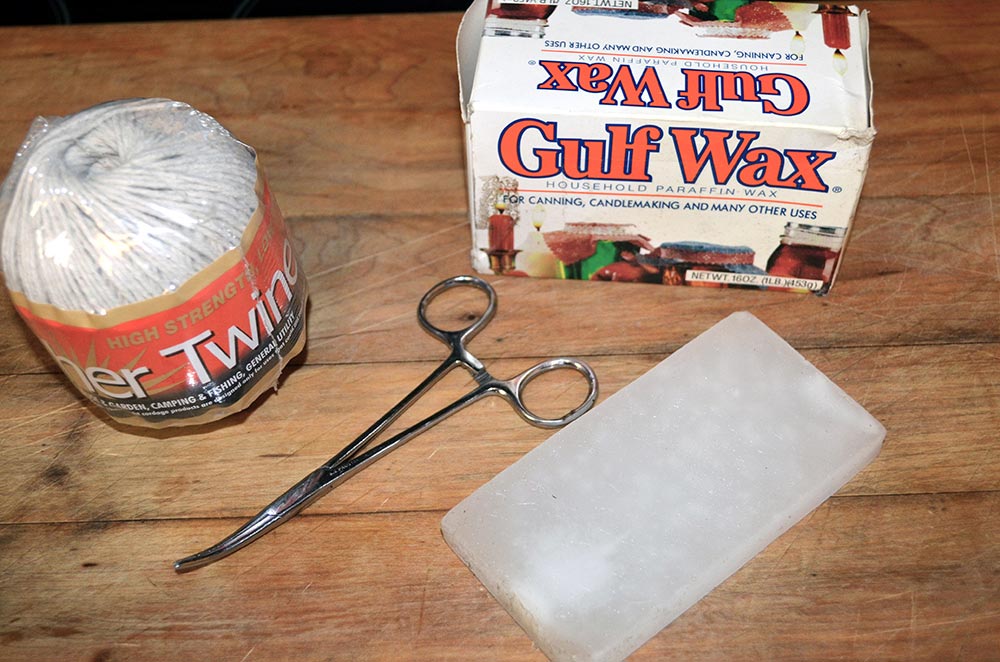
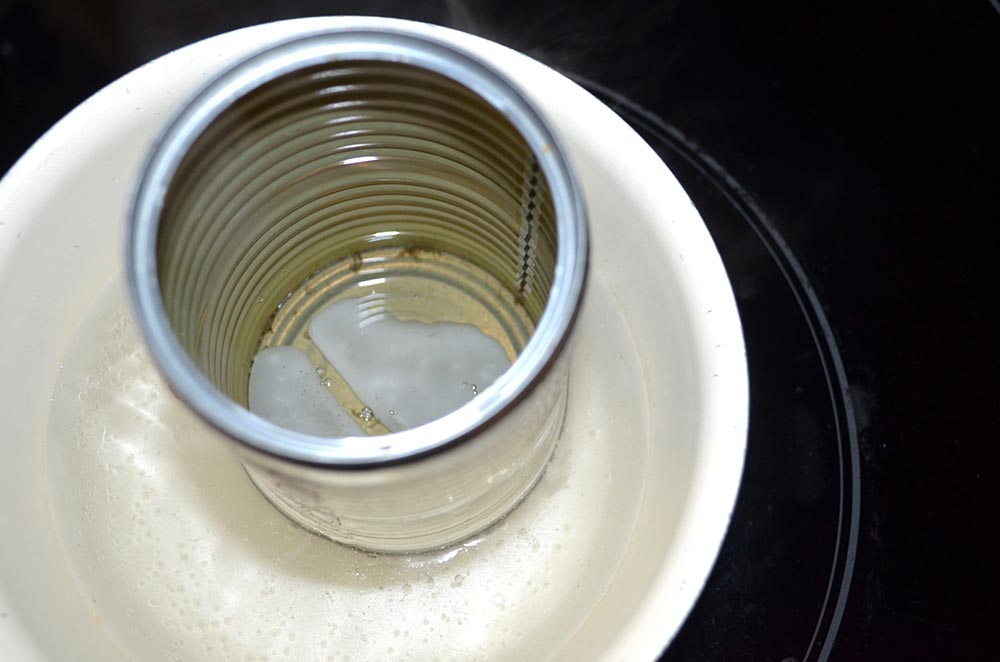
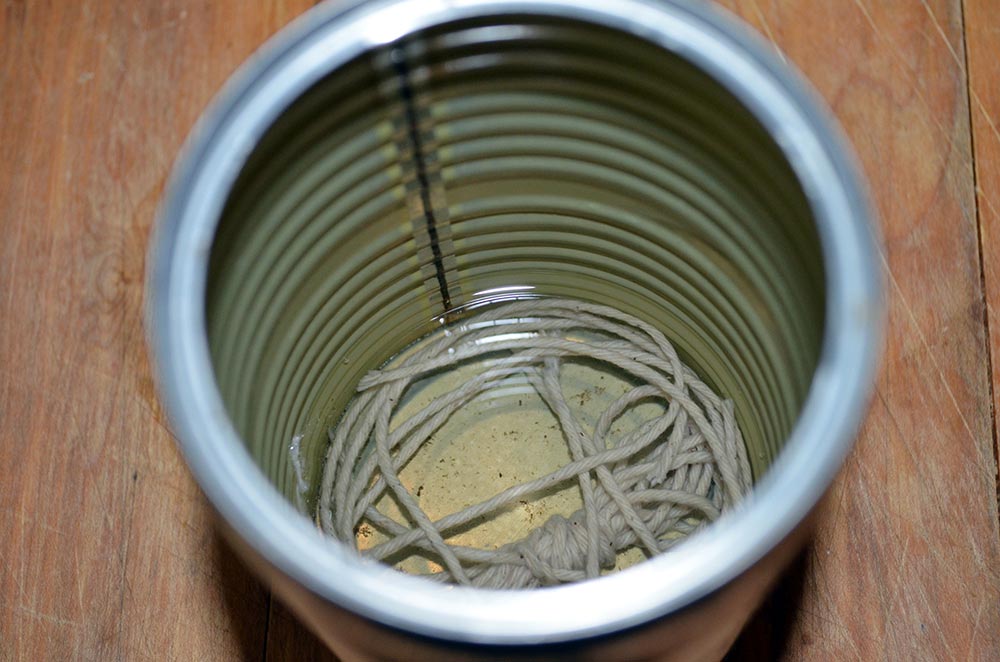
Unless you wish to invite the wrath of the family cook, you’ll want to take some precautions with the wax. What works great is put together a makeshift double boiler using a soup can that you’ve washed out. Put about three inches of water in a saucepan and start it heating. Break up the wax into small pieces and put them into the can, filling it about halfway. If you’re using crayons, peel the paper from them first.
Keep the water at just below a boil, otherwise the can might bobble around too much. Use a small twig to stir the wax and break up the chunks as it melts. While you’re waiting for the wax to fully liquify, cut off a few lengths of twine, each one about a foot or so.
Once the wax is melted, dip the twine into it, using the twig to push the twine down so it is fully immersed. Slowly pull it out, let it drip for a second into the can, then lay it out on a piece of waxed paper to dry. Repeat with each length of twine.
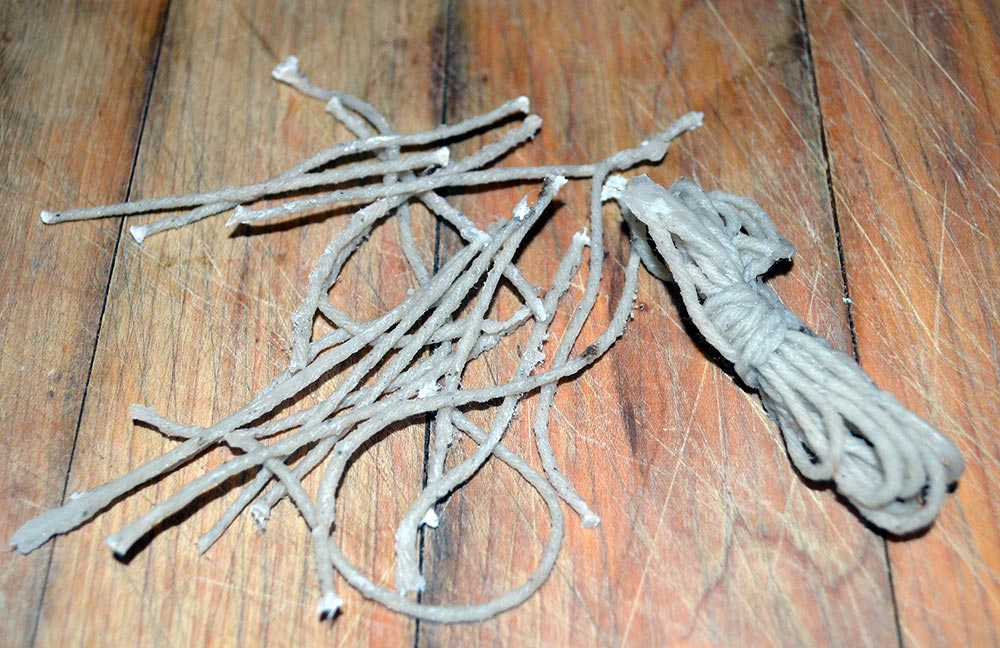
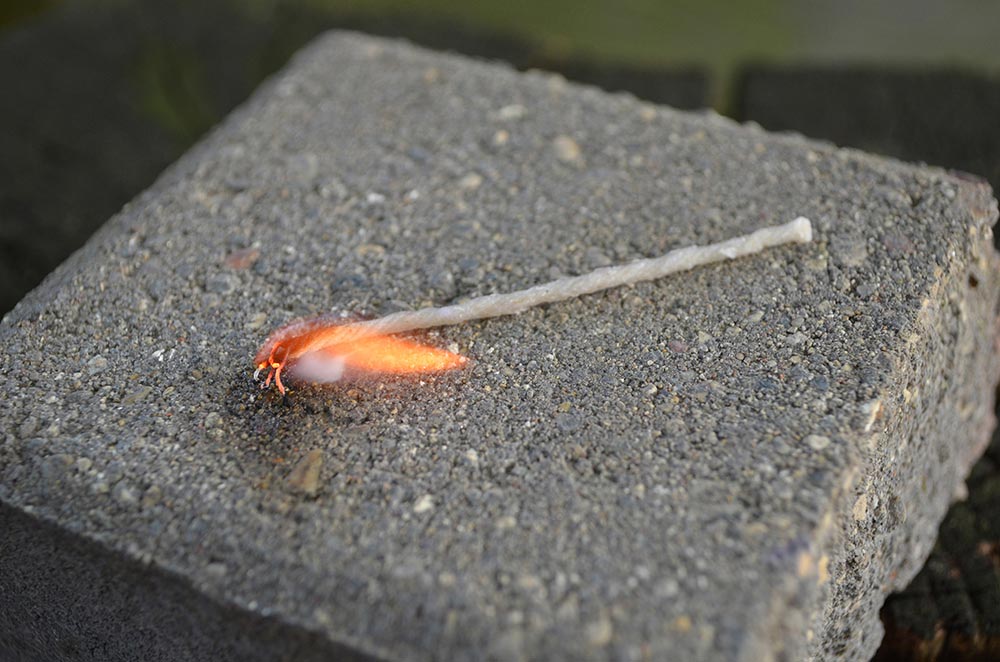
Cut each length into smaller pieces, about three inches long. These store great in the ever popular mint tins many preppers and survivalists like to use for their fire and other kits. Because they’re covered in wax, they are virtually waterproof.
To use, pull the end apart a bit to fluff it up, then light. It will burn steadily for several minutes. As a variation, you can twist and reverse twist the twine to make it thicker before dipping it into the wax.
TRIED AND TRUE
This one is an oldie but a goodie, and is about as easy as it gets. You’ll need cotton balls, petroleum jelly, and a plastic sandwich bag. Start by putting a healthy dollop of the petroleum jelly into the bottom of the bag. Add a handful of cotton balls and start to smush it all together. The goal is to get each cotton ball infused with the jelly.
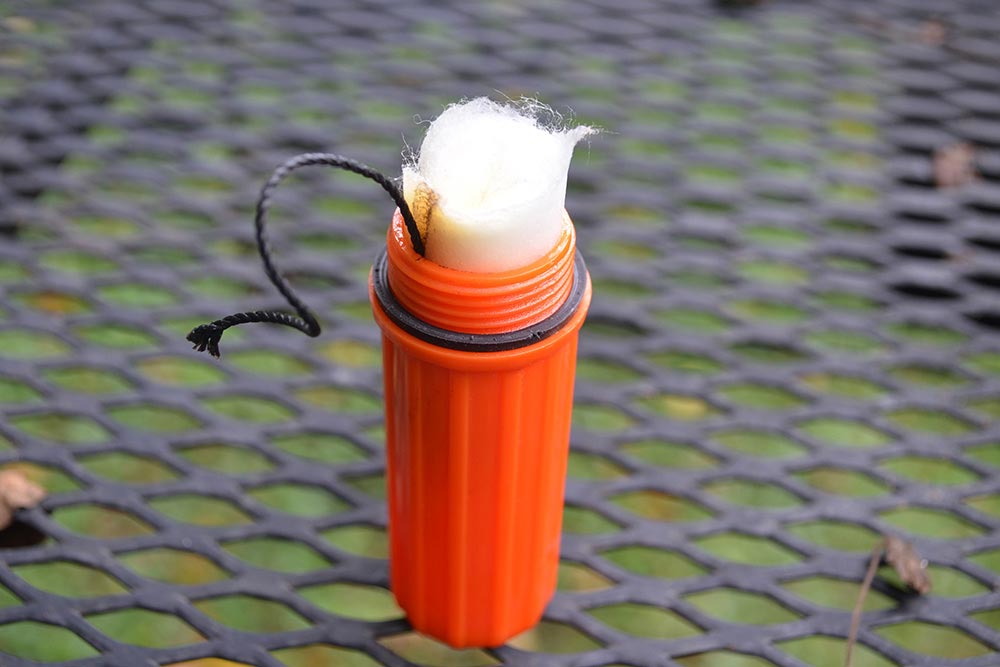
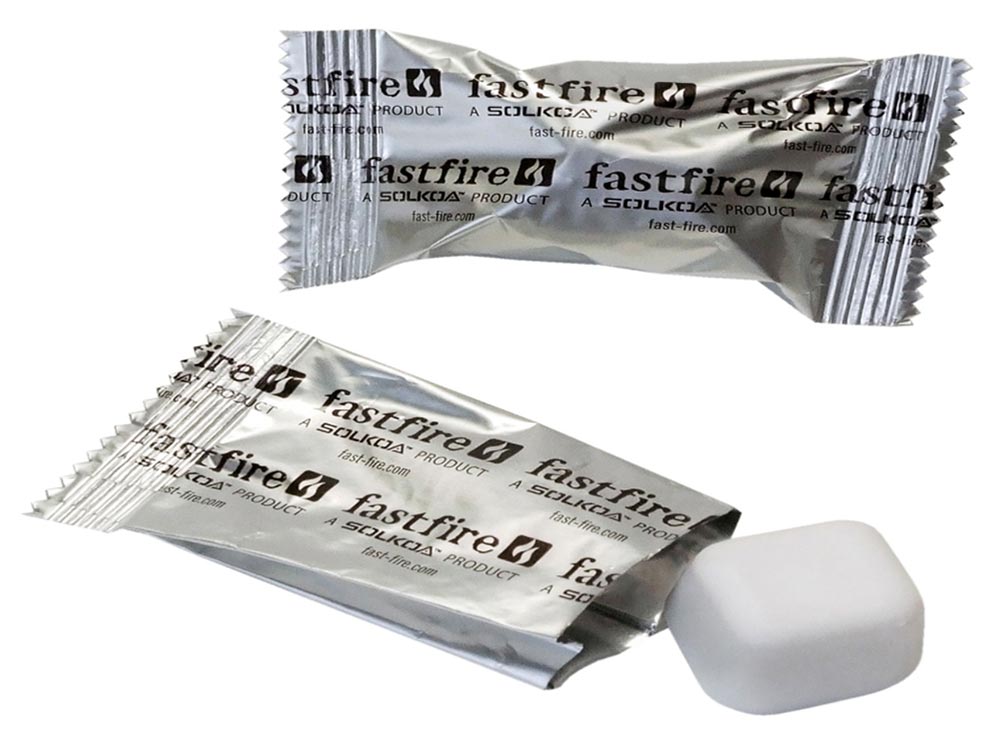
Now, you can stop there and consider it done, as that’s all that’s truly required. You can toss that bag right into your kit. However, there’s always a chance of it tearing and petroleum jelly getting all over your other gear. One storage option is to pick up an inexpensive match case. They’re waterproof, so nothing can leak out. What I like to do is tie a string to the first cotton ball that goes into the case, then pile in the rest. The string is long enough to reach outside the case. Then, when I need a cotton ball, I open it up and tug on the string, pulling the stack upwards and I just pluck off the top one. No muss, no fuss.
These are simple fire starters to use. Just fluff one up to increase the surface area, then light it. Each one burns for plenty of time to get the fire started.
QUICK AND DIRTY
There may be times when you find yourself lacking proper fire-starting supplies. If that happens and you absolutely, positively must get a fire going quickly, it is important to know a few improvised methods. However, I feel that it needs to be stressed that planning to improvise is not a great idea. By this, I mean that you shouldn’t pack any of these things specifically to use them to make fire. Rather, these are things you might have with you for other reasons that could help you light a fire in a pinch. Save the MacGyver solutions for when you don’t have the proper gear with you.
You might consider experimenting with some of these yourself to see how well they light as well as how long they burn.
Hand Sanitizer
These days, you’ll find a bottle of hand sanitizer in just about every vehicle, as well as purses and other bags that people routinely carry. If you look close, some of those bottles carry a warning that cautions against having an open flame near your hands right after applying the sanitizer. For example, don’t rub it all over your hands, then light a cigarette. Reason being, hand sanitizer is largely alcohol, which is highly flammable. It evaporates from your hands fairly quickly, but if you put a dollop of it on a surface, it will burn for a few minutes.
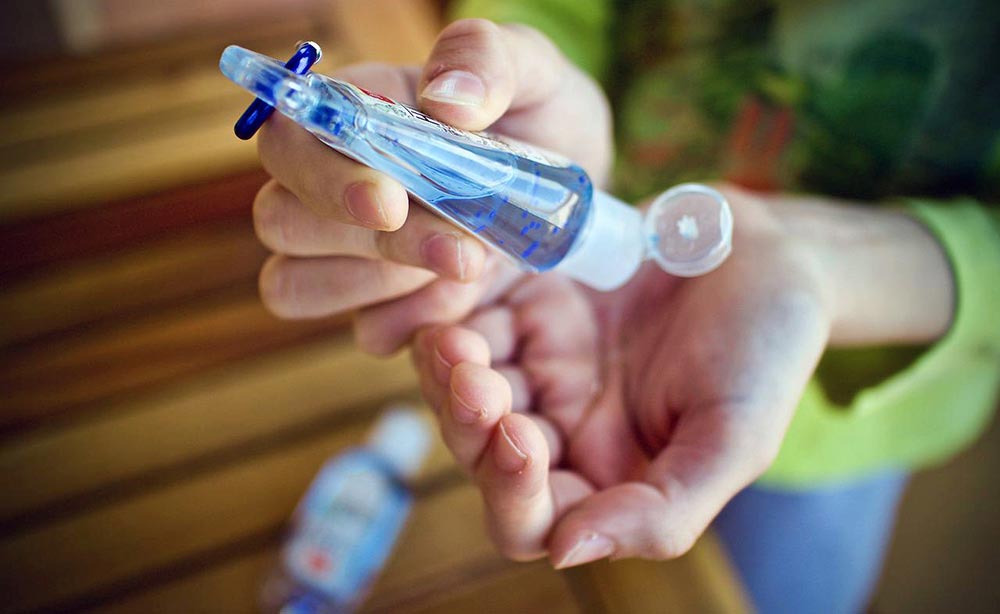
Duct Tape
One of the primary components of any decent tool kit, duct tape has a million uses. Add fire starting to that list, as it burns hot. Something to consider is that, depending on where you are when disaster strikes, you might be able to scavenge strips of duct tape from the area around you. Given how commonly it is used in repair work, you can probably find some to use for lighting your fire. Fair warning, though. As it burns, it melts and if it gets on your fingers, it is very difficult to remove, leading to potentially severe burns.
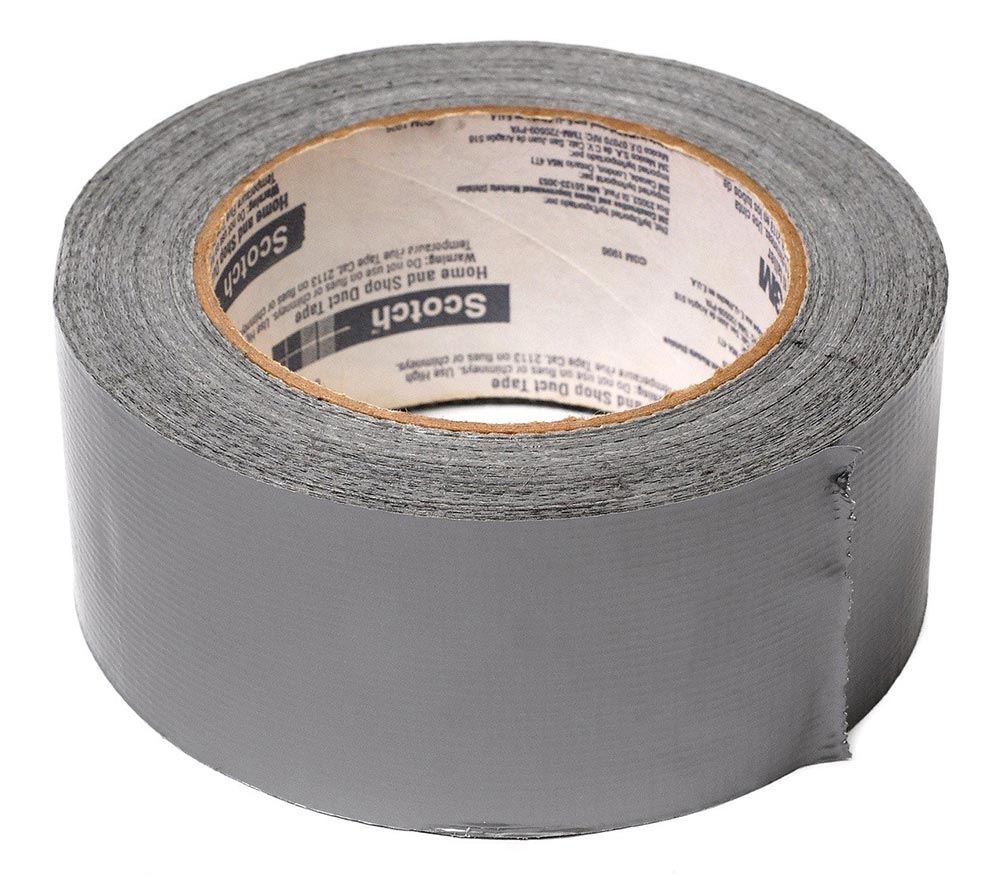
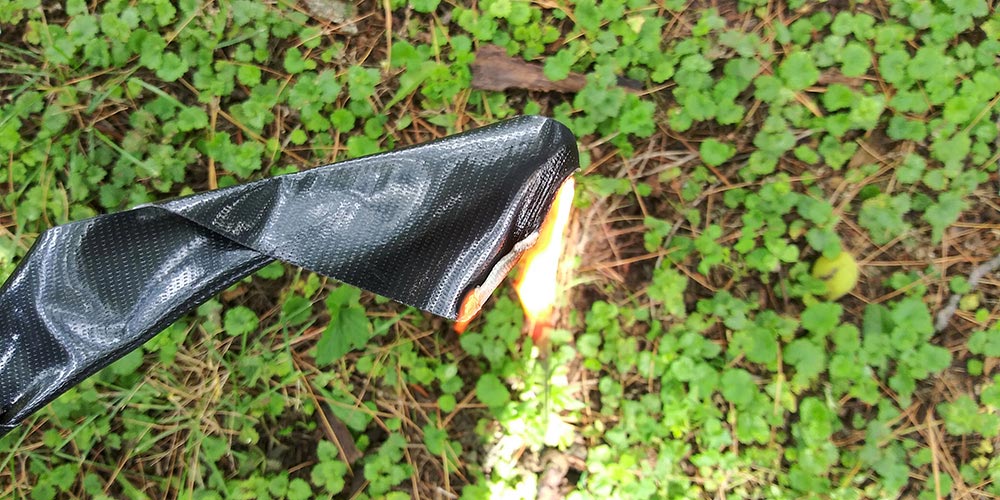
Snack Chips
If you’re confident that you need the fire more than you’ll need the calories, pull out the chips you’d packed for lunch. Many of them, including potato chips as well as nachos, have enough oil content to burn for a few minutes or more. If you packed baked chips instead of the original varieties, you can try lighting them but you might be out of luck.

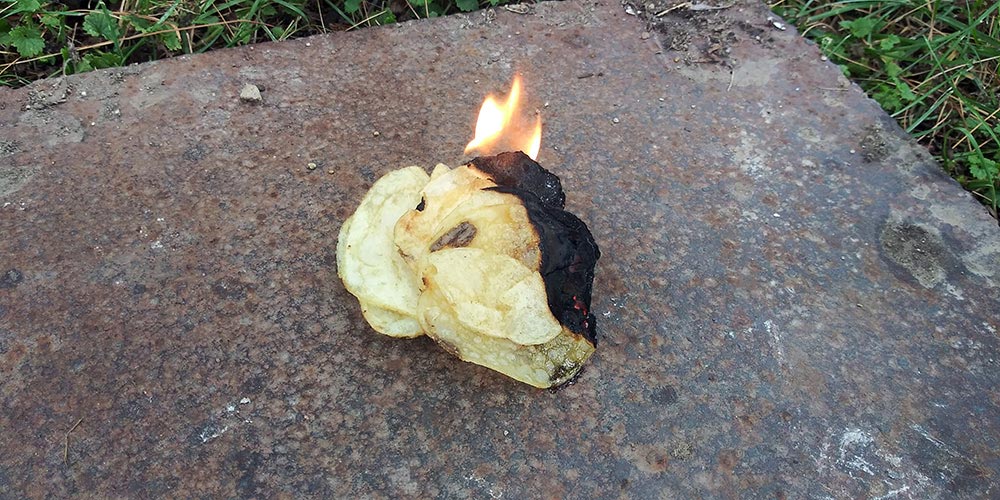
Feminine Hygiene Products
From pads to tampons, these are often mostly cotton inside, which burns very well. Tampons, in particular, do far better in this role than they do with expedient first-aid applications. Fluff up the cotton before lighting as it will burn better that way.
A reliable means of getting a fire going is a survival necessity. Keep some fire starters, whether store-bought or homemade, in every kit, along with a disposable lighter and some other means of ignition, such as a ferrocerium rod.
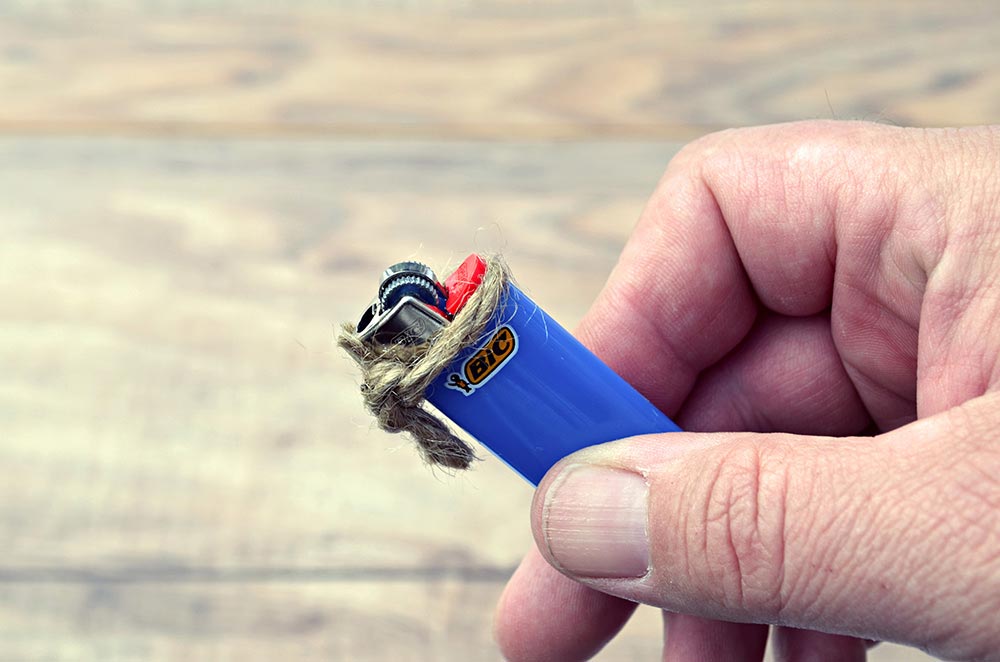
DRYER LINT
THE SIMPLEST HOMEMADE TINDER
If you have a clothes dryer, odds are you have all the tinder you’ll ever need, right at your fingertips. There’s a reason why there are warnings every year for people to clean out their lint traps and the dryer exhaust. Lint is very flammable.
The caveat is that the lint must be from natural fibers, like cotton. Synthetics don’t burn, they just melt. But bath towels, blue jeans, flannel shirts, all that warm and fuzzy material makes lint that’s great for starting fires.
If you have dogs or cats, odds are the lint will have a fair amount of fur mixed in with the cloth fibers. Some people have remarked that this lends an unpleasant smell to the lint as it burns. Personally, I’ve not noticed it myself, despite having multiple cats and dogs. Either way, if it is a true life or death situation, I think I’d be okay with putting up with a little stink for a few minutes.
A version of this article first appeared in the August 2022 issue of American Outdoor Guide Boundless.

